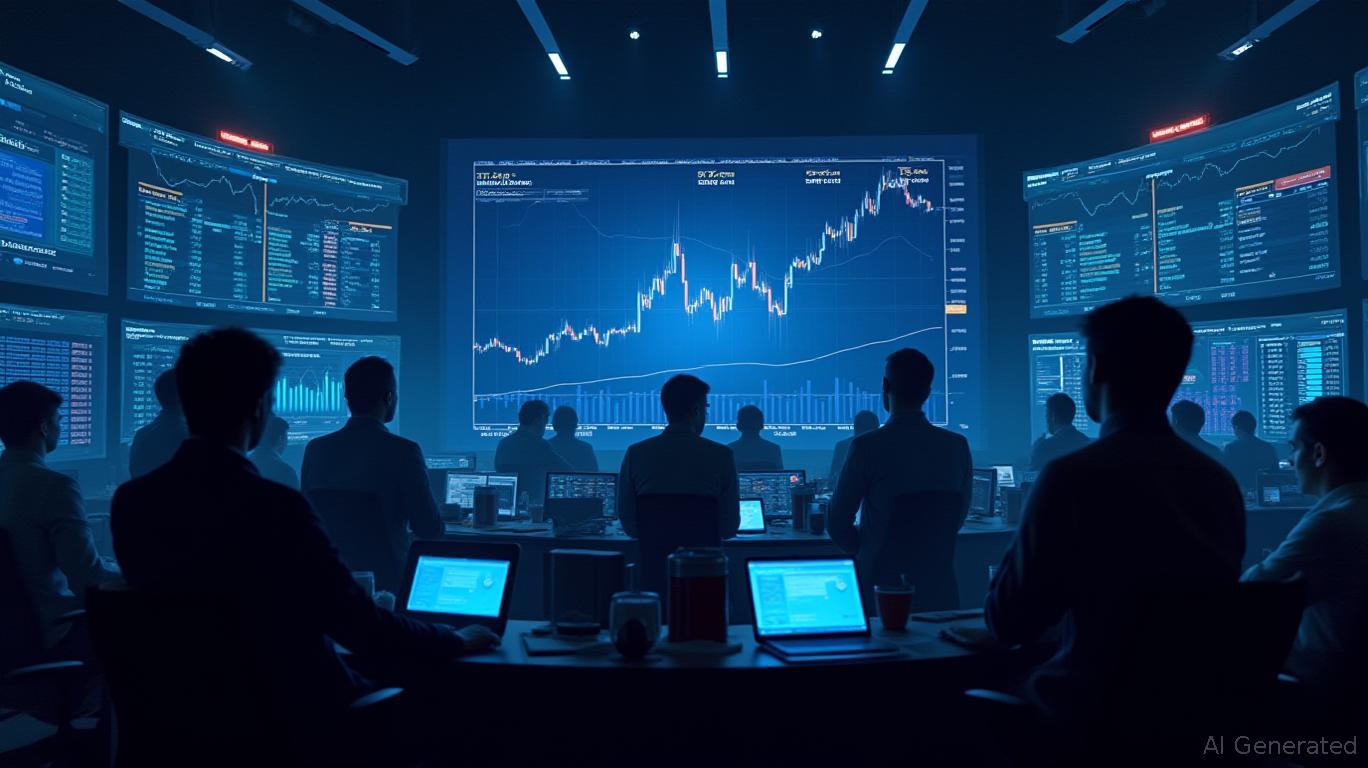U.S.-China Trade Tensions Intensify as Beijing Advocates for a Multipolar World Order
- China's Wang Yi emphasized a "multipolar world" amid U.S.-China trade tensions, framing it as an inevitable shift in global power dynamics. - Beijing's five-year plan prioritizes reducing foreign tech reliance and boosting domestic consumption, while U.S. tariffs and Chinese export controls disrupt global supply chains. - Pre-summit talks show "preliminary consensus" on avoiding further tariffs, but structural rivalry persists over rare earths, soybeans, and regional alliances. - Regional diplomacy highl
China has highlighted the certainty of a "multipolar world" just before a crucial meeting between President Xi Jinping and U.S. President Donald Trump, as ongoing trade disputes and strategic rivalry between the two countries continue to alter the global economic and political landscape. Chinese Foreign Minister Wang Yi made these comments, reflecting Beijing's determination to resist U.S. economic pressure and promote its vision for a more distributed international system, as reported by the
These talks are set against the backdrop of China's most recent five-year plan, which focuses on decreasing dependence on foreign advanced technology and encouraging domestic spending amid intensifying trade tensions. Following a high-level Communist Party gathering, the plan, according to

Despite ongoing negotiations, officials from both nations remain engaged in a series of retaliatory actions. The U.S. has enacted broad tariffs, including a 100% duty on Chinese imports effective November 1, while China has responded with restrictions on exports of vital minerals and rare earths, according to
Diplomatic efforts in the region have also been prominent, with China aiming to ease relations with Australia following military incidents in the South China Sea and amid broader U.S.-led alliances. Premier Li Qiang highlighted the importance of cooperation in green technology and digital innovation during discussions with Australian Prime Minister Anthony Albanese, as reported by
The upcoming Trump-Xi summit carries significant weight. U.S. Treasury Secretary Scott Bessent suggested there may be advances on rare earth and soybean agreements, but larger issues—such as U.S. efforts to persuade European partners to distance themselves from China and Beijing's growing presence in the Pacific—are still unresolved, Bloomberg noted. China's foreign minister once again called for "removing politics from economic matters" and opposing "trade conflicts," presenting the multipolar world as a natural progression in global affairs, according to the Economic Times.
As both countries maneuver through these intricate circumstances, the prospects for collaboration remain uncertain. While each side recognizes the importance of managing disagreements, the fundamental contest for technological and economic leadership appears set to continue, as reported by
Disclaimer: The content of this article solely reflects the author's opinion and does not represent the platform in any capacity. This article is not intended to serve as a reference for making investment decisions.
You may also like
Morph and Bitget Collaborate to Create a Rapid Stablecoin Infrastructure for Worldwide Financial Systems
- Singapore-based Morph partners with Bitget to build a high-speed stablecoin settlement layer targeting 10,000+ TPS and zero-trust security for cross-border payments. - Bitget's BGB token will power Morph's infrastructure, integrating 120M+ users with instant stablecoin transactions and automated yields via Bitget Wallet's 130+ blockchain support. - The collaboration aligns with $310B stablecoin circulation in 2025 and projected $4T market by 2030, addressing scalability gaps in onchain finance through un

Ethereum Updates Today: Large Investors and Experts Support Ethereum’s Upward Potential Amid Broader Economic Uncertainties
- Ethereum buyers show strength amid dips, with whale positions rising to $131M and analysts highlighting bullish technical patterns like a "triple bottom" near $3,800. - Key indicators including EMAs and MACD confirm shifting momentum, suggesting potential rebounds toward $4,250–$10,000 if resistance levels hold. - Macroeconomic risks persist, including U.S. CPI data and ETF outflows ($127.5M), though Bitcoin's $111k rally and on-chain accumulation hint at possible short-term resilience. - Bears warn of a

Ethereum Updates: SHIB Burn Rate Soars While Ecosystem Remains Static—Will the Blaze Boost Its Worth?
- SHIB faces structural challenges despite record 26,493% token burns, with TVL on Shibarium below $1 million. - Analysts split between bullish technical signals and fundamental concerns over 589 trillion circulating supply and lack of ecosystem utility. - Deflationary momentum may not offset stagnant adoption, as capital shifts toward utility-driven crypto sectors like AI and DePIN. - Traders watch $0.00001042 price level for potential breakout, but fundamentals remain critical for sustained growth.

Bitcoin News Today: Surge in Bitcoin Loans as Investors Leverage Assets for Cash Flow and Sidestep Tax Issues
- Ledn surpassed $1B in Bitcoin-backed loans in 2025, driven by $392M Q3 volume and $100M annual recurring revenue from liquidity solutions. - Institutional adoption grows as Sygnum Bank launches multisig lending, JPMorgan explores Bitcoin-backed loans, and mining firms secure $100M credit lines. - Regulatory progress, including U.S. crypto market bills and stablecoin banking access, accelerates corporate Bitcoin accumulation and custody expansion. - Market analysts project $45B in Bitcoin lending by 2030
